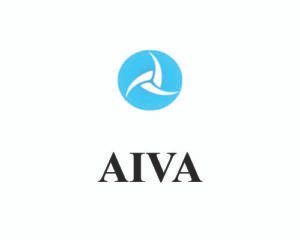1. Overview and Purpose
Microsoft Teams is a unified platform that combines workplace chat, meetings, video conferencing, file storage, and application integration. It is designed to facilitate teamwork and collaboration by bringing together different tools in one place.
2. Key Features
Chat and Messaging:
- Persistent Chat: Teams offers threaded conversations within channels, as well as private messaging between users.
- Rich Text: Users can format messages with bold, italics, bullet points, etc.
- Mentions and Notifications: You can mention people to get their attention, and customize notifications to stay updated.
Channels and Teams:
- Teams: These are groups of people, content, and tools based on projects or departments. Within each team, there can be multiple channels.
- Channels: Channels are dedicated sections within a team to keep conversations organized by specific topics, projects, or disciplines.
Meetings and Video Conferencing:
- Scheduled Meetings: You can schedule and join meetings directly from Teams, Outlook, or the Teams mobile app.
- Ad-hoc Meetings: Start an impromptu meeting with a single click.
- Video Conferencing: Supports high-definition video and audio, with options for screen sharing and live reactions.
- Breakout Rooms: Ability to split participants into smaller groups during meetings for focused discussions.
File Sharing and Collaboration:
- File Storage: Teams integrates with OneDrive and SharePoint, allowing users to store, share, and collaborate on files.
- Real-Time Collaboration: Multiple users can work on the same document simultaneously within the Teams interface, with changes synced in real-time.
Integration with Microsoft 365:
- Office Apps Integration: Teams tightly integrates with Word, Excel, PowerPoint, and other Office apps, allowing seamless file creation and editing.
- Planner and To-Do: Users can manage tasks using Microsoft Planner and To-Do, which integrate into Teams.
- Third-Party Apps: Supports integration with a wide range of third-party applications like Trello, Asana, GitHub, and more.
Security and Compliance:
- End-to-End Encryption: Teams supports end-to-end encryption for messages and files, ensuring security.
- Compliance Features: Offers various compliance and eDiscovery tools, making it suitable for industries with strict regulatory requirements.
- Advanced Security Features: Multi-factor authentication (MFA), single sign-on (SSO), and role-based access control.
3. Benefits
- Enhanced Collaboration: Brings all collaboration tools into one platform, reducing the need for multiple apps.
- Integration with Microsoft 365: Seamless access to other Microsoft apps and services, enhancing productivity.
- Scalability: Suitable for organizations of all sizes, from small businesses to large enterprises.
- Accessibility: Available across various devices (desktop, mobile, web), ensuring that teams can work from anywhere.
- Customization and Flexibility: Customizable to fit the unique needs of different teams and projects.
4. Use Cases
- Remote and Hybrid Work: Ideal for organizations with remote or hybrid work environments, enabling teams to stay connected and productive regardless of location.
- Project Management: Teams can be used to manage projects, with channels dedicated to different aspects of a project, and task management tools integrated.
- Education: Microsoft Teams for Education allows educators to create virtual classrooms, share resources, and communicate with students.
5. Licensing and Pricing
Microsoft Teams is available in several tiers:
- Free Version: Offers basic features like chat, video calls, and limited storage.
- Microsoft 365 Business Basic: Includes Teams along with other Microsoft 365 apps.
- Microsoft 365 Business Standard: Adds more advanced features like meeting recording and larger storage.
- Enterprise Plans: Tailored for large organizations, offering advanced security, compliance, and administration features.
6. How It Works
- Setting Up Teams: Users can create teams based on departments, projects, or specific needs. Channels within these teams help organize conversations.
- Communication: Team members can communicate through chat, calls, or video meetings.
- Collaboration: Files and documents can be shared and co-authored in real-time.
- Meetings and Scheduling: Integrated with Outlook, Teams allows for easy meeting scheduling and management.
7. Future Developments
Microsoft continues to enhance Teams with new features like AI-powered transcription, more robust integration with other Microsoft services, and enhancements to the user experience.
8. Competitors
Microsoft Teams competes with other collaboration tools such as Slack, Zoom, Google Workspace (Google Chat, Meet), and Cisco Webex.
9. Getting Started
To start using Microsoft Teams, users can sign up for the free version or subscribe to one of the Microsoft 365 plans, download the Teams app, and begin setting up teams and channels for their organization.










